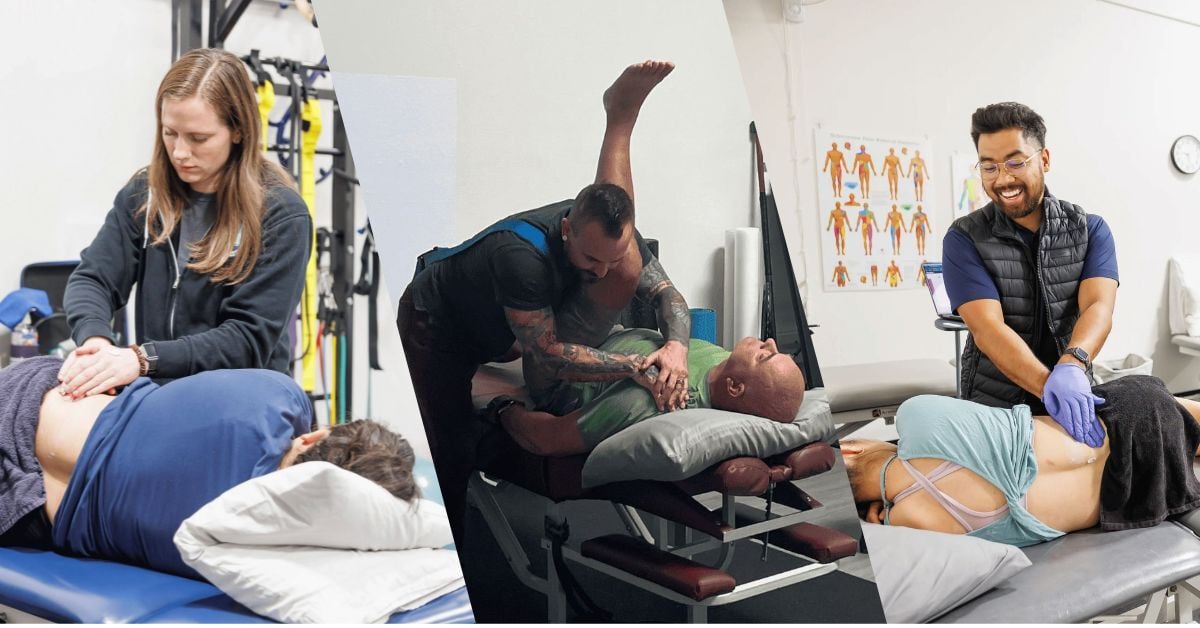-1.png?width=1200&height=628&name=Untitled%20design%20(1)-1.png)
Do I Need To Have Pain To See A Physical Therapist?
One of the most common questions we get as physical therapists is: “Do I have to be in pain to come in?” The short answer? Not at all. While aches and pains are unfortunately pretty common, they’re not a requirement to seek physical therapy.
Physical therapists are movement experts. And while pain often shows up when something in your movement patterns isn’t quite right, it’s not the only sign. In today’s post, we’ll explore other reasons people come to physical therapy – and how it might be a great option for you, even if you’re not currently hurting.
Define the Problem or Topic
Physical therapists are trained to spot the small details in how we move – things most of us wouldn’t even notice. Pain is often a sign that something isn’t moving quite right. Think of it like your body’s smoke alarm: it’s loud, uncomfortable, and meant to get your attention.
But pain isn’t the only signal. Sometimes, a movement might just feel a little off – maybe one side feels tighter, or things feel out of balance. The problem is, most of us were never really taught how to listen to these signals from our bodies. That’s where a physical therapist can help. We’re here to tune into those quieter messages before they turn into something bigger.
Another time to consider PT? When you’re hitting a plateau in the gym. If your workouts are starting to feel stuck, a physical therapist can help uncover hidden movement restrictions or stability issues that may be holding you back. With a trained eye, we can help fine-tune your form and get you progressing again – safely and effectively.
Explain How Physical Therapy Addresses the Problem
Whether you’re in pain or not, a physical therapist will take you through a full-body assessment – looking at joint mobility, muscle strength, and movement patterns that might feel off, uneven, or just not quite right. Even if nothing hurts, we want to know if anything feels awkward, restricted, or concerning to you.
This kind of movement screen helps us identify what’s working well and what might be causing strain, imbalance, or inefficiency. Think of it as translating your body’s signals—even the quiet ones – into a clear action plan.
While pain can help guide certain parts of rehab, it’s not the only way we measure progress. In fact, working with a physical therapist when you’re not in pain can be a powerful way to safely advance your training, refine your movement, and prevent injuries before they start.
Break Down the Treatment Components
Our muscles work in pairs – when one activates, its opposite has to relax to allow smooth movement. It’s a constant give-and-take. If that relationship is off, it can throw off your entire movement pattern.
That’s why physical therapy sessions often include a mix of hands-on techniques, like massage, cupping, scraping, or joint mobilizations, to improve range of motion. But that’s just one piece of the puzzle. We also pair that work with targeted strength and stability exercises to wake up the muscles that might be underactive or “sleepy.”
Focusing on just flexibility or just strength rarely leads to lasting change. It’s the combination that makes the difference. A physical therapist can help you put all the pieces together into a plan that’s not just effective, but sustainable, so you can get back to 100% and stay there.
Address Common Patient Questions or Concerns
How long you’ll be in physical therapy – and what your treatment looks like – depends on a few key factors. These include which part of the body we’re working on, how long you’ve been experiencing symptoms, your overall health, and most importantly, your personal goals. Are you training for an event? Hoping to return to a favorite hobby? Just want to move through your day without discomfort? All of that matters.
We get it – feeling new symptoms in your body can be frustrating, and even a little scary. But you don’t have to figure it out alone. A consultation with a physical therapist is a great way to get clarity on what’s going on, understand your options, and create a plan that’s tailored to you.
Whether you’re trying to stay ahead of an issue or get back to full strength after one, we’re here to support you every step of the way.
Recap and Reinforce Key Takeaways
You don’t have to wait for pain to take the first step toward better movement. Whether you're dealing with discomfort, trying to prevent injury, or just want to feel stronger and more balanced in your daily activities, physical therapy can help you move with more confidence and ease.
If something doesn’t feel quite right – or if you’re simply curious about how to optimize your movement – we’re here to help. Contact us at Advanced Physical Therapy & Wellness to schedule a free consultation, or visit our website to learn more about how we can support your goals.


.png?width=1368&height=912&name=082A9785%20(1).png)